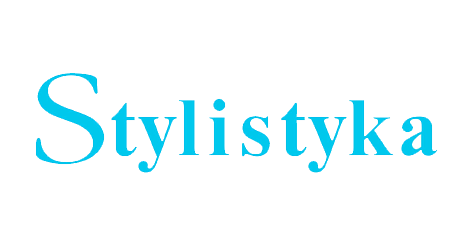

 https://doi.org/10.25167/%20Stylistyka35.2025.10
https://doi.org/10.25167/%20Stylistyka35.2025.10
Over the past 50 years, Slovak stylistics, has undergone a process of pragmatisation, aligning with broader developments in the social sciences, while maintaining continuity or continuity of structuralist methodology. This evolution is reflected in its adaptation to the communication-pragmatic turn in linguistics. Traditional functional Slovak stylistics (particularly between 1970 and 1990) is grounded in the notion that (standard) language functions as a predefined tool, independent of its users, situational context, cultural-historical anchorage or media. In stylistic research, this manifests itself in an orientation towards a purposeful way
of expression and deliberate handling of language (Mistrík, 3rd edition 1997). An essential aspect of this approach is the overestimation of repeatability and regularity in relation to style and the abstraction of profiling styles as model structures (Findra
2013). However, F. Miko acknowledges a certain degree of variability in the texts produced, in opposition to the theoretical framework of the expression theory of styles. His definition of styles as a “unique or standardized dynamic configuration of expressive properties in text” (Miko 1970) underscores an understanding of stylistic variability and processuality, challenging the rigid schematization associated with reductionist deductive invariants (static models) of style.
Between 1990 and 2010, Slovak stylistics undergoes a shift toward sociolinguistic research, marking a departure from the study of language as a systemic phenomenon in favour of examining its communicative functions. J. Bosák advocates for focusing on the typification of communicative practices based on special sublinguals within the entire national language emphasizing the characteristic expressive material used to facilitate flexible and contextually appropriate speech behaviour (Bosák 1995).
Similarly, D. Slančová conceptualizes style as a distinctive mode of verbal interaction, wherein communicative participants engage with established registers which represent socially conventionalized patterns. (most recently Slančová 2019).
In the digital era of the 21st century, Slovak stylistics has emerged as a highly interdisciplinary and dynamic field that investigates human-mediated interactive speech communications. Under this framework, style is culturally embedded and discursively fluid, lacking prescriptive formulations and existing as a set of recommendations. Contemporary stylistic inquiry is conducted inductively, aiming to identify and analyse communication styles within prototypical spheres of communication. The neofunctionalist approach (Gajda 2006) within this paradigm seeks to observe and interpret the meaning of participant interactions in communicative acts as well as the effects produced by such interactions (Dolník 2013) This conceptualisation of stylism is reflected in the works of V. Patráš, O. Orgoňová or A. Bohunická (cf. Patráš 2019; Orgoňová - Bohunická 2018).
Pobierz pliki
Zasady cytowania
Licencja

Utwór dostępny jest na licencji Creative Commons Uznanie autorstwa – Użycie niekomercyjne – Na tych samych warunkach 4.0 Międzynarodowe.